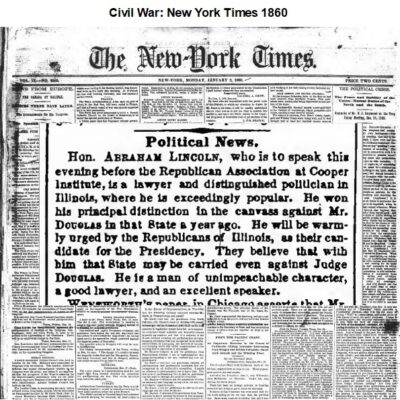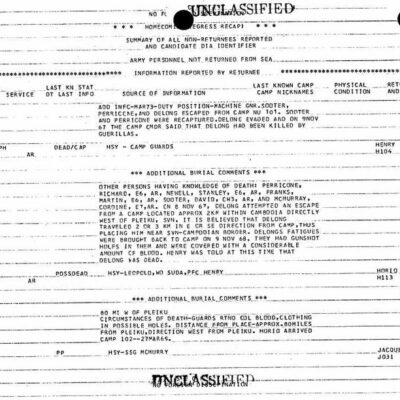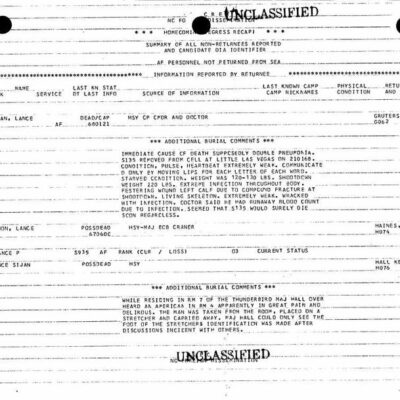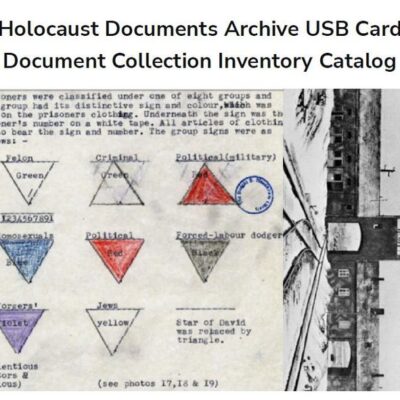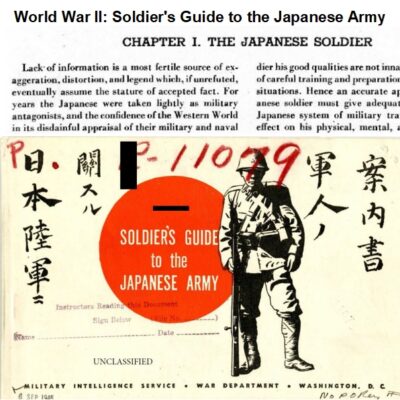
Vietnam War: NSA Official History – Cryptologic Series
$19.50
Description
NSA Cryptology and Operations in the Vietnam War
Detailed Timeline of Main Events Covered in NSA Vietnam War Histories
This timeline focuses on the National Security Agency’s (NSA) involvement and cryptologic activities during the Vietnam War, drawing from the “Vietnam War National Security Agency (NSA) Official History Volumes Cryptologic Historical Series.”
1945-1961: Early Involvement and Pre-Escalation (Pre-US Ground War)
- 1945-early 1950s: Initial U.S. COMINT (Communications Intelligence) efforts begin against Viet Minh communications, marking the earliest cryptologic involvement in Indochina. (Source: Spartans in Darkness: American SIGINT and the Indochina War, 1945-1975)
- Early 1960s: The political history of the conflict in Southeast Asia begins to unfold, laying the groundwork for increased U.S. involvement. (Source: Southeast Asia: In the Shadow of War (To the Gulf of Tonkin))
- 1961: The expansion of NSA personnel and equipment in Vietnam begins. American SIGINT (Signals Intelligence) formally arrives in the Republic of Vietnam. (Source: Southeast Asia: In the Shadow of War (To the Gulf of Tonkin), Spartans in Darkness)
1961-1964: Growing U.S. Presence and Early SIGINT Operations
- 1961-1965: Continued expansion of NSA personnel and equipment in Vietnam. (Source: Southeast Asia: In the Shadow of War (To the Gulf of Tonkin))
- Early 1960s: Establishment of the SABERTOOTH program, under which the United States provides training for South Vietnamese Army personnel in interception, direction finding, and the processing of communications. (Source: Southeast Asia: In the Shadow of War (To the Gulf of Tonkin))
- 1964 (Pre-August): The “internal crisis” in South Vietnam (Post-Diem period) necessitates SIGINT support. Efforts focus on the Ho Chi Minh Trail and the infiltration problem, referred to as “To Die in the South: SIGINT, the Ho Chi Minh Trail, and the Infiltration Problem.” (Source: Spartans in Darkness)
- August 2-4, 1964: The Gulf of Tonkin Incident occurs, a pivotal event where the NSA’s view is detailed in later histories. (Source: Spartans in Darkness)
1964-1967: Escalation, COMSEC Challenges, and Early OPSEC Development
- 1964-1972: SIGINT provides support to the air war, an effort termed “Xerxes’ Arrows.” (Source: Spartans in Darkness)
- Spring 1967: Lieutenant General Marshall S. Carter, Director, NSA, receives a proposal from Major General Charles J. Denholm, CGUSASA, to form an NSA-SCA team to create a complete historical documentation of SIGINT operations in Southeast Asia. This initiates the Cryptologic Historical Series. (Source: Vietnam War National Security Agency (NSA) Official History Volumes Cryptologic Historical Series)
- 1965-1967: America formally enters the ground war, a period referred to as “Third Interlude: ‘Who’ll Stop the Rain?’ America Enters the Ground War.” (Source: Spartans in Darkness)
- Mid-to-Late 1960s (Focusing on years to 1968, but also 1968-1969): U.S. COMSEC (Communications Security) monitors and analysts attempt to secure voluminous communications. Significant problems arise due to “communication-prone Americans” and “American laxity in communications security,” which the opposition’s SIGINT organization exploits. Technology for COMSEC surveillance evolves during this period. (Source: Southeast Asia: Working Against the Tide (COMSEC Monitoring and Analysis))
- Undated (Triggered by air operation failures): U.S. military realizes operations like ARC LIGHT and ROLLING THUNDER are not fully successful, suspecting inadvertent information leaks. This prompts a high-level investigation. (Source: PURPLE DRAGON: The Origin and Development of the United States OPSEC Program)
- Undated (Following investigation): The U.S. Joint Chiefs of Staff authorize Operation PURPLE DRAGON to test the hypothesis of self-revealed information. This multidisciplinary investigation seeks to identify insecure elements in combat operations. This marks the beginning of formal OPSEC (Operational Security) principles. (Source: PURPLE DRAGON: The Origin and Development of the United States OPSEC Program)
1968-1973: Major Offensives, Vietnamization, and OPSEC Institutionalization
- 1968: The Tet Offensive occurs, with SIGINT playing a role described as “A Springtime of Trumpets.” (Source: Spartans in Darkness)
- 1968-1970: A period of “Grasping at the Straws of Victory.” (Source: Spartans in Darkness)
- June 1969: Publication of Southeast Asia: In the Shadow of War (To the Gulf of Tonkin), the inaugural volume of the NSA’s Cryptologic Historical series covering the Vietnam War. (Source: Vietnam War National Security Agency (NSA) Official History Volumes Cryptologic Historical Series)
- June 1970: Publication of Southeast Asia: Working Against the Tide (COMSEC Monitoring and Analysis). (Source: Vietnam War National Security Agency (NSA) Official History Volumes Cryptologic Historical Series)
- 1969-1973: Vietnamization efforts lead to the expansion of South Vietnamese SIGINT capabilities, an initiative referred to as “In Our Own Image: NSA, Vietnamizatlon, and the Expansion of South Vietnamese SIGINT.” (Source: Spartans in Darkness)
- Undated (Following PURPLE DRAGON): Operational security becomes institutionalized, moving beyond a specific operation to a broader program. The NSA plays a significant role in this development. (Source: PURPLE DRAGON: The Origin and Development of the United States OPSEC Program)
1973-1975: Withdrawal and Fall of South Vietnam
- 1973-1975: The period leading to and including the fall of South Vietnam, with focus on the DGTS (Directorate General of Technical Services, likely South Vietnamese SIGINT) and American SIGINT, described as “The Last Ramparts of Our Conceits.” (Source: Spartans in Darkness)
1975 and Beyond: Aftermath and Historical Documentation
- 1975 and Beyond: “Aftermath and Conclusions” of the war. (Source: Spartans in Darkness)
- June 1993: Publication of PURPLE DRAGON: The Origin and Development of the United States OPSEC Program. This remained Top Secret until December 2007. (Source: Vietnam War National Security Agency (NSA) Official History Volumes Cryptologic Historical Series)
- 2002: Publication of Spartans in Darkness: American SIGINT and the Indochina War, 1945-1975. This remained Top Secret until December 2007. (Source: Vietnam War National Security Agency (NSA) Official History Volumes Cryptologic Historical Series)
- 2004: Southeast Asia: In the Shadow of War (To the Gulf of Tonkin), originally published in June 1969, is completely declassified (though 65% remains secret and redacted). (Source: Vietnam War National Security Agency (NSA) Official History Volumes Cryptologic Historical Series)
- December 2007: PURPLE DRAGON (1993) and Spartans in Darkness (2002) are completely declassified, though portions remain redacted. (Source: Vietnam War National Security Agency (NSA) Official History Volumes Cryptologic Historical Series)
Cast of Characters
This list includes principle individuals and organizations mentioned in the sources, with brief bios based on the provided text.
Individuals:
- Marshall S. Carter:Bio: Lieutenant General, U.S. Army, and Director of the National Security Agency (NSA) in the spring of 1967. He received the proposal to initiate the Cryptologic Historical Series for the Vietnam War.
- Charles J. Denholm:Bio: Major General and Commander General of the U.S. Army Security Agency (CGUSASA) in the spring of 1967. He proposed the formation of an NSA-SCA team to create a comprehensive historical documentation of SIGINT operations in Southeast Asia, leading to the Cryptologic Historical Series.
- Robert Hanyok:Bio: Author of the 2002 monograph Spartans in Darkness: American SIGINT and the Indochina War, 1945-1975. He is credited with meticulously researching and richly detailing the history of cryptology in the Vietnam War, filling a significant void in historical accounts.
- David A. Hatch:Bio: Director of the Center for Cryptologic History. He provided an endorsement for Robert Hanyok’s Spartans in Darkness, highlighting its importance in covering the previously underrepresented SIGINT and INFOSEC aspects of the Vietnam War.
- Intelligence Analyst (name classified):Bio: The author of the 1993 NSA monograph PURPLE DRAGON: The Origin and Development of the United States OPSEC Program. This individual provided an account of the initial problems in air operations that led to the development and institutionalization of Operational Security (OPSEC) in Vietnam.
Organizations/Groups:
- National Security Agency (NSA):Bio: The primary U.S. intelligence agency responsible for global monitoring, collection, and processing of information and data for foreign intelligence and counterintelligence purposes. The provided sources detail its extensive involvement in SIGINT, COMSEC, and OPSEC activities throughout the Vietnam War, including the establishment of its Cryptologic Historical Series.
- U.S. Army Security Agency (USASA):Bio: A former intelligence agency of the United States Army responsible for signals intelligence, and the parent organization of Major General Charles J. Denholm.
- South Vietnamese Army (SVA):Bio: The military ground forces of South Vietnam. The NSA established the SABERTOOTH program to train SVA personnel in interception, direction finding, and communications processing, aiming to expand their SIGINT capabilities.
- Viet Minh:Bio: A nationalist and communist political movement and army in Vietnam that fought for independence from French rule. They were the subject of early U.S. COMINT efforts from 1945.
- North Vietnam / Viet Cong (Opposition):Bio: The adversaries of the United States and South Vietnam during the war. Their SIGINT organization successfully capitalized on American laxity in communications security, and their ability to avoid U.S. operations suggested they were receiving vital, inadvertently revealed information.
- Joint Chiefs of Staff (JCS):Bio: A body of senior uniformed leaders in the United States Department of Defense who advise the President, the Secretary of Defense, the Homeland Security Council, and the National Security Council on military matters. They authorized Operation PURPLE DRAGON to investigate and address U.S. operational vulnerabilities.
- 509th ASA Group:Bio: A component of the U.S. Army Security Agency, mentioned as a source of historical accounts for COMSEC unit operations in Working Against the Tide.
- 6922d AFSS Security Wing:Bio: A component of the Air Force Security Service (AFSS), mentioned as a source of historical accounts for COMSEC unit operations in Working Against the Tide.
- Directorate General of Technical Services (DGTS):Bio: Likely a South Vietnamese signals intelligence organization, mentioned in Spartans in Darkness as part of the narrative concerning American SIGINT and the fall of South Vietnam (1973-1975).

